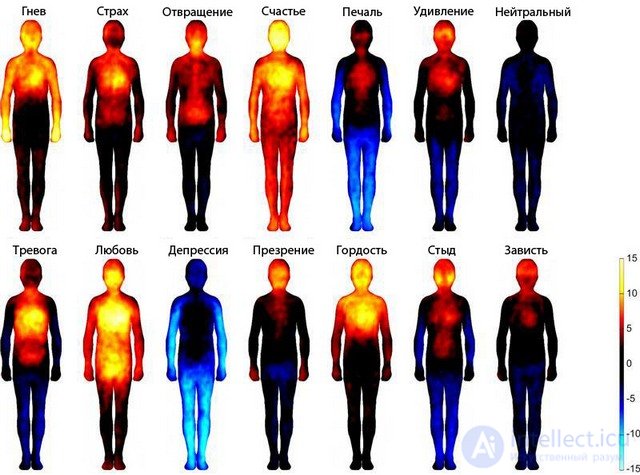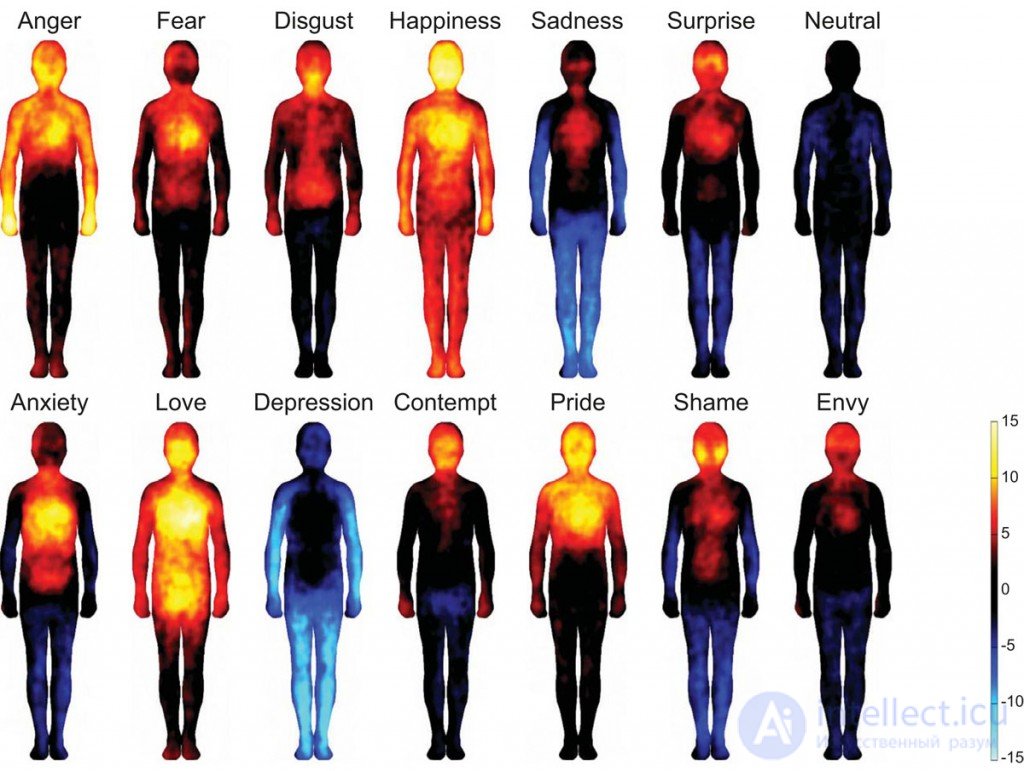Lecture
New research has shown that people feel different emotions in certain parts of the body .
A team of scientists from Aalto University in Finland conducted an experiment on 701 participants, who were shown emotional videos, photos of various facial expressions, stories and films that evoke certain emotions.
Then they were asked to use the silhouettes of a person, generated on a computer, to indicate exactly where in the body they felt this or that stimulus , adding cold or hot colors.
“We often think that emotions are something that happens only in the mind, but there is a lot of evidence that it happens in our body,” explained the author of the study Lauri Nummenmaa .
Emotions have the same physical idea as psychological, and, as scientists have found, despite the cultural differences, most of the emotions are physically felt by people the same way.
The researchers conducted a study on more than 700 volunteers from Finland, Sweden and Taiwan, whose task was to capture the physical sensations in the body when a person experiences this or that emotion.
Participants were offered to watch and listen to various materials, after which they described their feelings in their bodies. The obtained data was transferred by scientists to a two-dimensional silhouette of a person, having received a “heat map” of emotions - from intensifying sensations to weakening them.
Curiously, some emotions are very similar to each other, such as pride and anger. At the same time, love is the only emotion that causes the glow between the legs ... At the same time, shame looks like a Spider-Man suit.
Scientists have combined the participants' responses to create universal heat maps of a wide range of emotions.
Most of the basic emotions caused activity in the upper chest , possibly due to changes in breathing and heart rate.
Sensations in the upper limbs are inextricably linked with the emotions of rapprochement, such as anger and love, and less activity or heaviness in the limbs are associated with the emotions of sadness and anxiety.
Changes in the face are associated with many emotions, and sensations in the throat and abdomen appeared only when people felt disgust.
Compared to other emotions, happiness caused sensations throughout the body .


Comments
To leave a comment
Psychology of emotions
Terms: Psychology of emotions